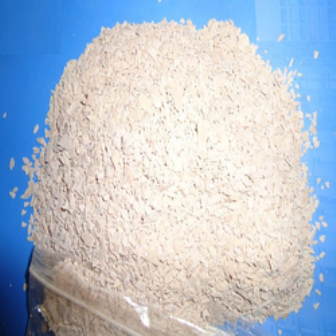Naphthol Dye
 |
| Naphthol Dye |
Naphthols
The Naphthols are phenols, solvent in basic arrangement and substantive to cotton, especially in the vicinity of salt. The anilides of BON acid(beta-oxynaphthoic corrosive or BON corrosive) are dissolvable in weaken NaOH arrangement and structure the relating naphtholate particle. These generally little atoms are of just low to direct substantivity for cotton, however they diffuse quickly into the filaments. As a rule, the higher the substantivity the better the rubbing speed as less azo color structures on the fiber surfaces. The naphtholate particles are constantly coplanar and ideally have prolonged atomic structures. They carry on basically as dismal, low sub-atomic weight direct colors. The substantivity increments with increment in the sub-atomic size of the naphtholate particle, however the dispersion rate in the strands and solvency in weaken watery antacid decline. Expansion of salt advances better fatigue of the shower, additionally being required for Naphtols of lower substantivity.Bases:
These are accessible as the free amine base or as amine salts, for example, the hydrochloride.Many of the amines utilized are basic substituted aniline subordinates with no ionic substituents. The supposed Quick Shading Bases oblige diazotisation. This typically includes response of the essential fragrant amine in acidic arrangement or scattering with sodium nitrite, at or beneath room temperature. Fruitful diazotisation obliges watchful weighing of every last one of chemicals and respect for the supplier's proposals. Diazotisation of an essential sweet-smelling amine is regularly troublesome and arrangements of diazonium particles are innately unsteady. They experience decay even at low temperature and especially on introduction to light. Putting away arranged diazonium particle arrangements is not normally conceivable.General Coloring Method of Naphthol Dyes:
The use of the naphthols is comprises of taking after steps
1.Dissolution of the naphthol part.
2.Exhaustion of the naphthol dolution onto the substrate or ingestion of the naphtholate particle by the cotton;
3.Removal of overabundance naphthol from the material by pressing, halfway hydroextraction or salt water washing.
4.Diazotization of the base part.
5.Development or treatment with the diazonium particle answer for realize coupling.
6. Balance ,Soaping at the bubble to uproot shallow color, trailed by washing and drying.
The methodology can be completed in any sort of coloring machine dictated by the type of the merchandise.
Precautionary measures in Naphthol Dyeing:
1.The alkalinity of the naphthol bath might not drop beneath as far as possible , generally the naphthol might presipitate.2.Formaldehyde might not be utilized when working at more than 50 Deg C or when the material is to be dried after naphthol application.
3.Material might be shielded from water spotting,steam,acid and chlorine vapor , and introduction to daylight after naphthol application.
4.Use of abundance salt in naphthol shower may come about into precipitation of the shower.
5.The temperature is vital in base arrangement stem , generally diazotization may not occur.
6.Sodium acetic acid derivation must be added to the creating shower just before the utilization , generally base will get to be precarious because of fall in convergance of HCl.
7.Hydroextraction time should not be too long , which may come about into light spots after advancement.
8.Material should be washed immediately in the wake of creating , generally the mechanically held abundance creating alcohol will experience some disintegration and reason affidavit of dim shaded spots , which will be hard to uproot.
9.It is essential to utilize adequate measure of soluble base tying operators , else it will come about into presipitation of creating shower.
Stripping Process in Naphthol Dyeing:
-Treat the colored material with Non ionic cleanser and 3-5 gpl harsh pop at bubble for 15 min. cool to 85 degC
-Include 3-5% grass. hydrosulphite for 30-45 min at 85 deg.
-Flush hot and icy
-Blanch with 1-2 Gpl Accessible chlorine for 20 min.
-Antichlore and kill.
-Cleanser at Bubble for 15-20 min.
-Icy flush.
Parts of Diverse Chemicals in Naphthol Dyeing:
T.R. Oil :
Wetting operators for naphthol sticking and disintegration and entering specialists in fiber in naphthol application.
Caustic Soda:
For solubilising of naphthols and keeping legitimate alkalinity of naphthol shower.
Formaldehyde:
Defensive operators of naphthol impreganated material from impact of air.
Salt:
Electrolyte for fatigue of naphthol amid naphtholation and to keep the desorption of naphthol in the shower amid saline solution flushing and advancement stage.
HCl Corrosive:
Disintegration of base and to deliver nitrous corrosive in diazotization stage.
Sodium Nitrite:
Delivering nitrous corrosive in diazotization process.
Sodium Acetic acid derivation:
For balance of abundance HCl in creating shower.
Acidic Corrosive:
As an antacid tying operators in creating shower.
Non Ionic Scattering Operators:
To keep the azoic shades in fine scattering stage , which are shaped by the coupling of free naphthol in creating shower. Additionally helps in better shading quickness amid soaping operation.
Quickness Properties on Cotton
Effectively arranged dyeings with azoic blends on cotton have speed properties regularly equivalent, or just marginally mediocre, to those created utilizing quinone vat colors. They supplement the vat colors in view of the extensive variety of orange, red and Bordeaux shades that they give.
The quickness to washing of azoic blend dyeings on cotton is normally great to incredible however strictly when watchful disposal of particles of azo shade freely sticking to uncovered fiber surfaces. Transitional drying or washing of fabric containing the Naphtol, and the soaping of the last coloring, are key methods guaranteeing ideal quickness. The same contention applies to rubbing speed. Profound coloring that have not been all around soaped effortlessly exchange shading onto contiguous white fabric, even under states of delicate rubbing.
There are two different issues connected with the quickness properties of azoic mixes on cotton. In pale shades, the dyeings frequently have quite lessened light speed, especially under muggy conditions. Some delicate azoic mixes additionally give dyeings of not out of the question imperviousness to chlorine and peroxide bleaching.

.png)








0 comments:
Post a Comment